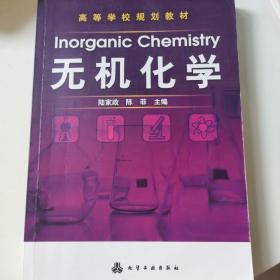
高等学校规划教材:无机化学
¥ 15 3.9折 ¥ 38 八品
仅1件
江苏南京
认证卖家担保交易快速发货售后保障
作者陆家政、陈菲 编
出版社化学工业出版社
出版时间2009-08
版次1
装帧平装
货号7
上书时间2021-09-28
- 最新上架
商品详情
- 品相描述:八品
图书标准信息
- 作者 陆家政、陈菲 编
- 出版社 化学工业出版社
- 出版时间 2009-08
- 版次 1
- ISBN 9787122062505
- 定价 38.00元
- 装帧 平装
- 开本 16开
- 纸张 胶版纸
- 页数 307页
- 字数 529千字
- 正文语种 简体中文
- 丛书 高等学校规划教材
- 【内容简介】
-
《无机化学》针对药学类专业无机化学的双语课程,将无机化学课程的基本内容进行精选,结合国内高校教学实际,删除原版教材中大量的复杂、繁琐及较深奥的部分,力求使之既能体现无机化学课程的专业基础课特色,又可提高学生的英语应用能力。
鉴于医药学专业学生理论与实验课程并重的特点,全书包含两大部分:ⅠInorganicChemistry与ⅡInorganicChemicalExperiments。PartⅠincludingsthirteenchapters:1Introduction,2StructuresofAtoms,3Chemicalbonds,4Thermochemistry,5ChemicalKinetics,6ChemicalEquilibrium,7Solutions,8SolubilityEquilibrium,9AcidBaseEquilibria,10AnIntroductiontoElectrochemistry,11ChemistryofCoordinationCompounds,12NonmetalsandSemimetals,13Metals。PartⅡincludingsthreechapters:1BasicTechniquesofExperimentalChemistry,2TypicalChemicalLaboratoryApparatus,3Experiments。
《无机化学》可作为高等院校本科药学及化学类相关专业的无机化学双语教材,也可作为化学专业英语课的教材或参考书。 - 【目录】
-
ⅠInorganicChemistry1
Chapter1Introduction2
1.1ObservationsandConclusions3
1.2TheScientificMethod3
1.3UnitsofMeasurement5
1.4AdviceonStudyingChemistry8
KeyWords8
Chapter2StructuresofAtoms9
2.1ParticlesinAtoms10
2.2TheBohrModel12
2.3TheWaveTheoryofElectrons13
2.4HeisenbergsUncertaintyPrinciple14
2.5TheSchrdingerEquation14
2.6QuantumNumbers15
2.7ShapesofAtomicOrbitals17
2.8ManyElectronAtoms19
2.9ValenceElectrons24
2.10ThePeriodicTableandElectronicConfigurationsofAtoms24
2.11ThePeriodicityofthePropertiesofElementsandAtomicStructure26
KeyWords30
Exercises31
Chapter3Chemicalbonds33
3.1IonicBonds33
3.2CovalentBonds35
3.3LewisDotSymbolsandLewisStructure37
3.4SigmaandPiBonds43
3.5BondPolarity44
3.6BondEnergy,BondLengthandBondAngle45
3.7MolecularGeometry47
3.8TheVSEPRModel47
3.9HybridOrbitals51
3.10MolecularOrbitals56
3.11IntermolecularForce64
KeyWords71
Exercises71
Chapter4Thermochemistry74
4.1FirstLawofThermodynamics74
4.2EnthalpyandEnthalpyChange75
4.3HesssLaw76
4.4EntropyandtheSecondLawofThermodynamics79
4.5SpontaneousProcessesandGibbsFreeEnergy80
4.6TemperatureandDirectionofSpontaneousChange81
4.7StandardFreeEnergyofFormationandStandardFreeEnergyofReaction82
KeyWords83
Exercises83
Chapter5ChemicalKinetics85
5.1ReactionRates85
5.2TheoriesofReactionRates87
5.3EffectofConcentrationonRateofReaction89
5.4RateandTemperature92
5.5Catalysis94
KeyWords95
Exercises96
Chapter6ChemicalEquilibrium98
6.1ConceptofEquilibrium98
6.2EquilibriumConstant98
6.3LeChteliersPrinciple103
KeyWords106
Exercises106
Chapter7Solutions108
7.1WaysofExpressingConcentration108
7.2ColligativeProperties113
KeyWords124
Exercises125
Chapter8SolubilityEquilibrium127
8.1SaturatedSolutionsandSolubility127
8.2SolubilityEquilibria127
8.3FactorsAffectingSolubility130
8.4PredictingPrecipitationReaction132
8.5SelectivePrecipitation134
8.6ApplicationofPrecipitateonMedicine137
KeyWords138
Exercises139
Chapter9AcidBaseEquilibria141
9.1AcidsandBases141
9.2IonProductofWater143
9.3StrengthofWeakAcidsandBases144
9.4ThepHofWeakAcidsandBases146
9.5TheCommonIonEffect148
9.6BufferSolutions150
KeyWords153
Exercises153
Chapter10AnIntroductiontoElectrochemistry155
10.1OxidationReductionReactions155
10.2BalancingOxidationReductionEquations158
10.3VoltaicCells161
10.4StandardCellElectromotiveForce164
10.5ElectrochemistryandThermodynamics171
10.6EffectofConcentrationonCellEMF172
10.7ReductionPotentialDiagramsofElements(LatimerDiagrams)174
KeyWords177
Exercises177
Chapter11ChemistryofCoordinationCompounds180
11.1TheHistoryofCoordinationChemistry180
11.2FormationofCoordinationCompound182
11.3NomenclatureofCoordinationCompounds184
11.4StructureandIsomerism185
11.5CoordinationEquilibriuminSolution187
11.6ValenceBondTheoryofCoordinationCompounds191
11.7TheCrystalFieldTheory194
11.8TheBiologicalEffectsofCoordinationCompounds199
KeyWords200
Exercises201
Chapter12NonmetalsandSemimetals203
12.1GeneralConcepts203
12.2Hydrogen203
12.3Boron204
12.4TheGroupⅣAElements,theCarbonGroupElements205
12.5TheGroupⅤAElements,theNitrogenGroupElements208
12.6TheGroupⅥAElements,theOxygenGroupElements211
12.7TheGroupⅦAElements,theHalogens215
12.8TheGroupⅧAElements,theNobleGases218
KeyWords218
Exercises219
Chapter13Metals220
13.1TheGroupIAElements220
13.2TheGroupⅡAElements224
13.3TheGroupⅢAElements229
13.4ASurveyofTransitionMetals232
13.5ChemistryofSomeTransitionMetals234
KeyWords239
Exercises239
ⅡInorganicChemicalExperiments241
Chapter1BasicTechniquesofExperimentalChemistry242
1.1Safety242
1.2RecordingResults243
1.3Weighing243
1.4ConcerningLiquids244
Chapter2TypicalChemicalLaboratoryApparatus252
Chapter3Experiments254
3.1SomeElementaryOperation254
3.2AcidBaseTitration256
3.3ElectrolyteSolutions259
3.4PreparationofOfficinalSodiumChlorideandItsPurityExamination262
3.5OxidationReductionReactions267
3.6CoordinationCompounds271
3.7TheHalogens275
3.8Chromium,ManganeseandIron278
3.9Copper,Silver,ZincandMercury283
3.10DeterminationoftheIonizationConstantofHAcbypHMeter287
3.11PreparationofAmmoniumIron(Ⅱ)Sulfate291
3.12PreparationandContentDeterminationofZincGluconate294
Appendix296
Reference
点击展开
点击收起
相关推荐
— 没有更多了 —


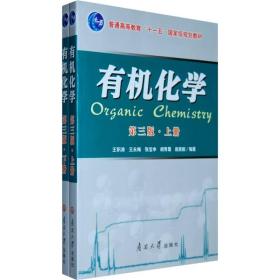
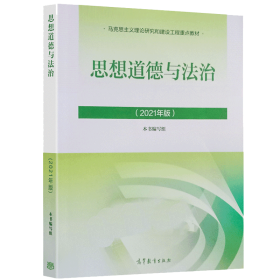

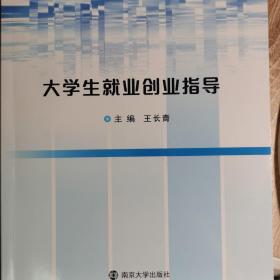

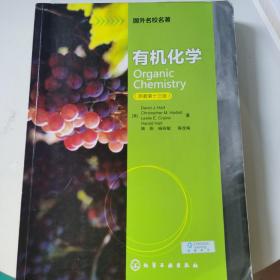

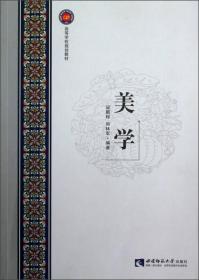
以下为对购买帮助不大的评价